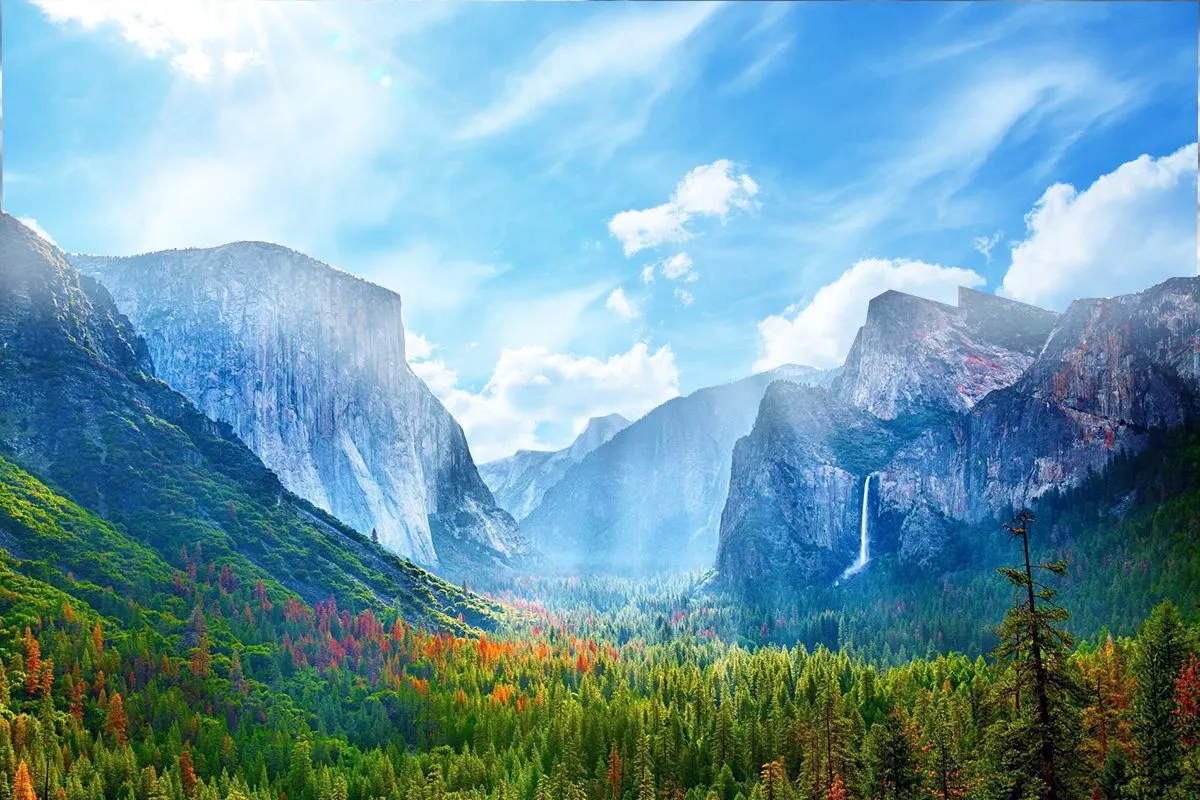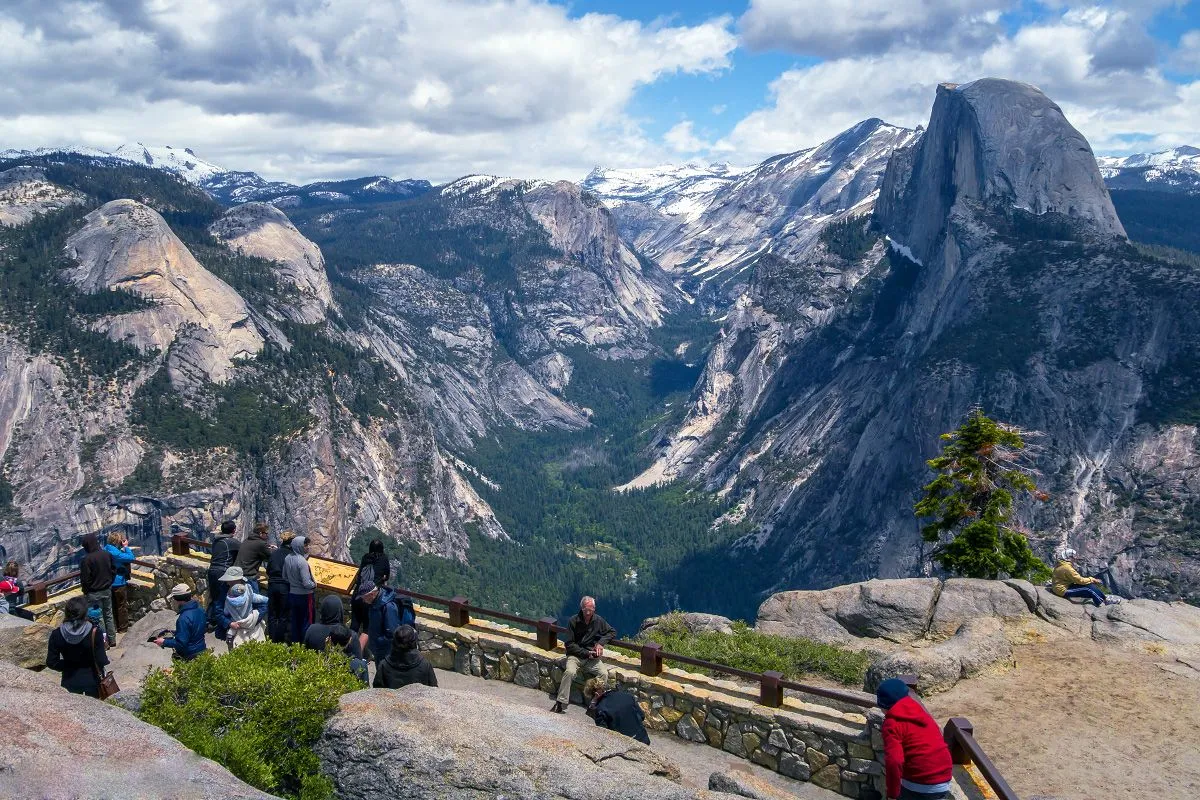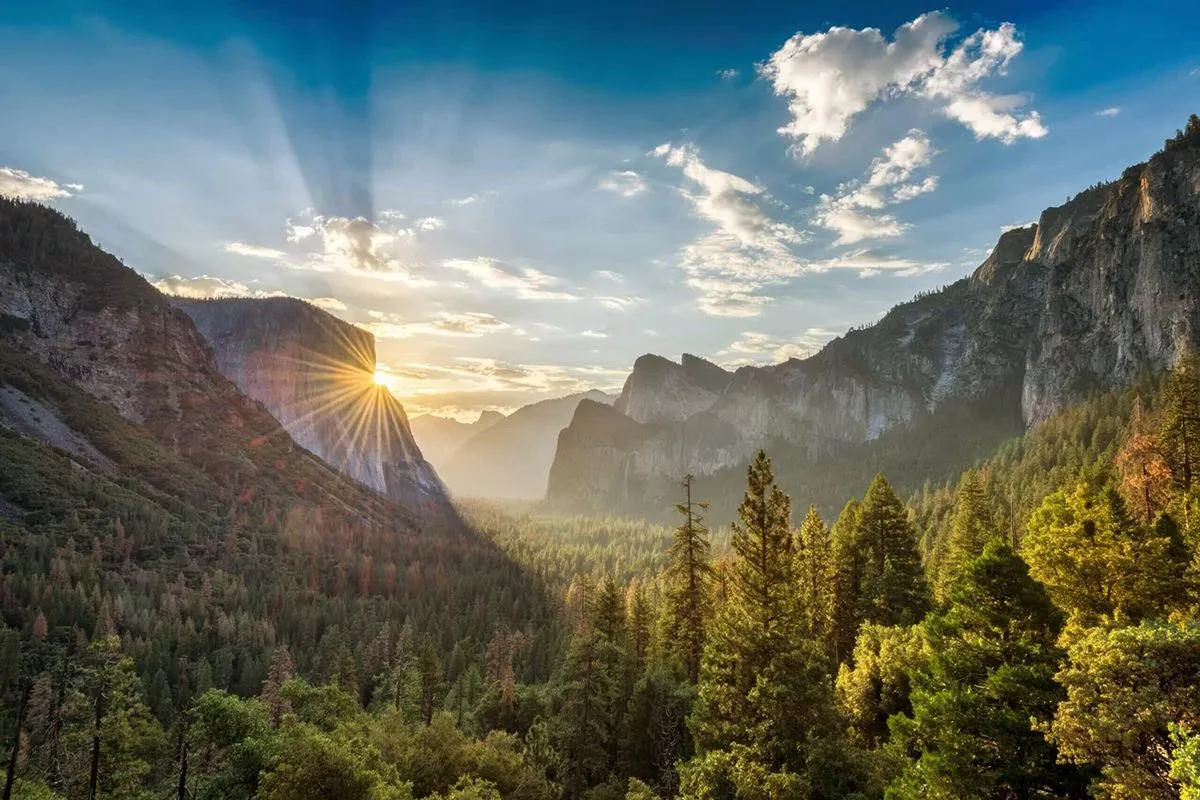Yosemite National Park, a symbol of American natural beauty, has always been a dream destination for travel and exploration enthusiasts. Among its countless wonders, Half Dome stands tall as an enticing challenge for those passionate about trekking. The journey to conquer Half Dome is not just a long hike, but an emotional adventure, where you immerse yourself in magnificent nature and discover your own limits.
Half Dome: Yosemite’s Iconic Challenge
Half Dome, with its unique shape resembling a sphere cut in half, is one of Yosemite’s most famous landmarks. This granite dome attracts visitors not only with its majestic beauty but also with the challenging trek to its summit. Rising nearly 2,700 meters (almost 8,800 feet) above sea level, Half Dome requires hikers to have good physical condition, perseverance, and a bit of courage.

Preparing Thoroughly for Your Half Dome Trek
To ensure safety and a memorable experience, thorough preparation is crucial before embarking on your Half Dome trek.
Hiking Permits
Due to the limited number of hikers allowed to protect the environment and ensure safety, you need a hiking permit issued by the Yosemite National Park Service. Permits are typically obtained through an online lottery system in early summer. Plan ahead and apply for a permit in advance to increase your chances of participating in this journey.
Essential Equipment
- Specialized Hiking Boots: Choose boots with good grip, ankle support, and comfort for long-distance walking.
- Backpack: Select a backpack of appropriate size, large enough to carry water, food, a jacket, and other essentials.
- Water and Food: Bring enough water (at least 3-4 liters) and energy-rich snacks such as protein bars, dried fruit, and nuts.
- Waterproof Jacket: Weather in Yosemite can change rapidly, so bring a waterproof jacket in case of unexpected rain.
- Sunscreen, Hat, Sunglasses: Protect your skin and eyes from sun damage.
- Gloves: Gloves help protect your hands when you need to grip the cables on the final section to the summit of Half Dome.
- Headlamp or Flashlight: A headlamp is useful if you have to hike in the dark, especially if you start early or return late.
Physical Training
The Half Dome trek is a significant physical challenge. You should start training physically at least a few weeks before your trip by hiking long distances, climbing stairs, or doing cardio exercises.
The Journey to Conquer Half Dome
The Half Dome trek usually starts from Yosemite Valley and is approximately 22-26 km (14-16 miles) round trip, with an elevation gain of over 1,460 meters (4,800 feet). The average time to complete the trip is 10-12 hours.
Starting from the Mist Trail
Most visitors choose to start their journey from the Mist Trail, one of Yosemite’s most famous trails. The Mist Trail takes you past two stunning waterfalls, Vernal Fall and Nevada Fall. However, this trail is quite steep and can be slippery, especially in spring when the waterfalls are flowing strongly.

Sub Dome and Cable Route
After passing Nevada Fall, you will reach Sub Dome, a large granite slope leading to the base of Half Dome. From here, you will begin ascending the Cable Route, the final and most challenging section of the journey. The Cable Route is a near-vertical steep section with two steel cables erected to help hikers grip and climb.

Conquering the Summit of Half Dome
Reaching the summit of Half Dome will reward you with a breathtaking panorama. From here, you can admire the entire Yosemite Valley, magnificent granite peaks, and lush green forests. The feeling of conquering one of America’s icons will be an unforgettable memory in your life.
Important Notes When Hiking Half Dome
- Time: Start your trek very early, around 4-5 AM, to avoid the heat and have enough time to complete the trip before dark.
- Weather: Check the weather forecast before you go and be prepared for all conditions. Do not hike Half Dome during thunderstorms or heavy rain.
- Safety: Always follow Yosemite National Park’s safety regulations. Hold onto the cables firmly when climbing the Cable Route and maintain a safe distance from others.
- Health: If you feel tired or unwell, stop to rest or turn back. Do not try to push yourself beyond your limits.
Explore Yosemite After Conquering Half Dome
After conquering Half Dome, you can spend time exploring other attractions in Yosemite, such as:
- Yosemite Valley: Admire the beauty of giant granite cliffs like El Capitan and Half Dome, the majestic Yosemite Falls, and lush green meadows.

- Glacier Point: Enjoy panoramic views of Yosemite Valley, Half Dome, Yosemite Falls, and many other landscapes from above.
- Mariposa Grove: Walk among giant sequoia trees, one of the tallest tree species in the world.
- Tuolumne Meadows: Enjoy the fresh air and pristine beauty of the green meadows with the winding Tuolumne River.
Conclusion
The Half Dome trek is a memorable and challenging experience, offering you the opportunity to discover the majestic beauty of Yosemite National Park and push your own limits. With thorough preparation and an adventurous spirit, you can conquer this icon and create unforgettable memories in your life. Remember that Yosemite is not just a tourist destination, but also a natural treasure that needs to be preserved and cherished.